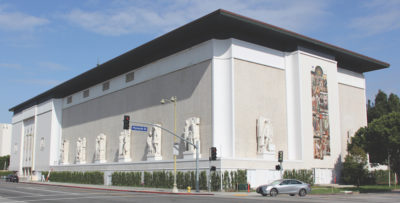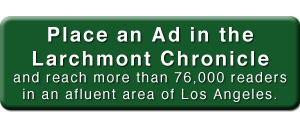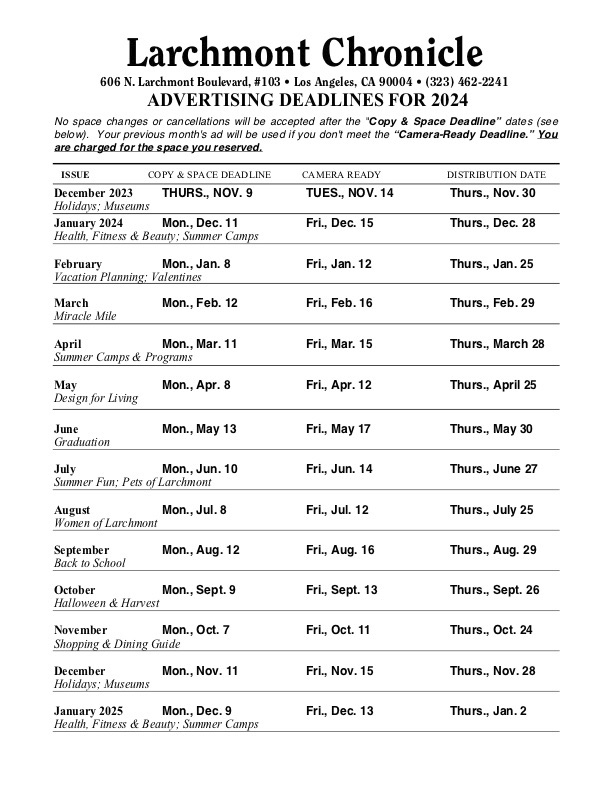On Books and Places: Permanence and renewal expressed in Marciano Art Foundation

MARCIANO Art Foundation in Windsor Square is the former Scottish Rite Cathedral.
No building in the Greater Wilshire area so self-consciously expresses permanence and solidity as what is now the Marciano Art Foundation. The former Scottish Rite Cathedral was completed in 1961 — a near past relative to the construction dates of churches, libraries, theaters, and schools from surrounding neighborhoods. But while most of those older structures have held up fairly well over time, the temple’s 58 years have been mostly marked by decline and disuse.
From our current vantage point, it’s easy to see that the ambitious plans of the Masonic organization were realized at just the wrong historical moment: so much that was unthinkable when the Masons were planning the building in the 1950s happened so quickly after 1961. Quentin Tarantino’s new film, “Once Upon a Time in Hollywood,” invokes 1969 as a before/after turn, but several wrenching events had already marked the decade and put in motion change that would allow no going back.
The sixties and early seventies unfolded in ways that made a midtown men’s club of grand size unsustainable — even in the language of the day, “irrelevant.” By 1994, the Masons were forced to surrender their temple. And one can imagine the 14-foot-tall figures of Imhotep, Hiram, Zerubbabel, Saint John (the Baptist), Saint John (the Divine), De Reims, Wren, Washington and Zebulon Pike that stand along the south and east walls looking in befuddlement over streets below.
wHY
Fortunately, Maurice and Paul Marciano bought the long abandoned building in 2013 and hired architect Kulapat Yantrasast (founder and creative director of the design studio wHY) to repurpose the space. For everyone involved, repurposing meant nothing less than re-enlivening. But that did not mean a complete reconceiving. To my mind, the Marciano Art Foundation and wHY saved a significant building in part by playing smartly both against and subtly with its type.
Exhibitions
The “against” has been easy to see in every one of the foundation’s major exhibitions to date. Donna Huanca’s “Obsidian Ladder” (on view) asserts a governing aesthetic explicitly contrary to the building it inhabits, one “built by and for men.” Past exhibitions found their own oppositions. Ai Weiwei’s “Life Cycle” referenced themes of displacement and dispossession amidst travertine, marble, and gold. Olafur Eliasson’s “Reality Projector” played with moving light and color in an almost windowless space. And Jim Shaw’s “Wig Museum” alluded to and even appropriated remnants of the building’s Masonic past to suggest nothing less than the coming end of “judiciary Anglo-Saxon power.”
Such dramatic language recalls past charges against this and other buildings from the Millard Sheets Studio, because the forces that undercut the Scottish Rite Cathedral were also at work against the imposing presence of Sheets’ many commercial projects: “fascist architecture,” some would label them. But the Marciano brothers and Yantrasast saw something worth saving — saw that the temple could be a welcoming host to contemporary art and viewers of that art. Yantrasast signaled his respect towards the original design in an interview shortly before the opening of the repurposed space: “We cleaned it up and let the DNA of the building shine through.”
Book on Sheets

MILLARD SHEETS book by Adam Arenson.
Adam Arenson’s recently published book “Banking on Beauty: Millard Sheets and Midcentury Commercial Architecture in California” does an excellent job tracing the complex threads of that DNA. Arenson’s focus is on the works developed for Howard Ahmanson and his Home Savings and Loan branches (still about our neighborhood and beyond as Chase Bank branches). Ahmanson, a Hancock Park resident, wanted buildings that would last, that would call attention to their solidity, and that would please the public. He gave Sheets, as would the Masons just a few years later, both the freedom and the budget to realize these goals.
The resulting buildings are more than, as some complain, stone fortresses. Arenson greatly appreciates the textures, shapes, and colors evident in the sculptures, stained glass, tapestries, and mosaics that decorate these buildings. And he attends closely to the cooperative processes that grew from one project to another. As gifted and energetic as Sheets was, he was not the sole creative force at the studio. In fact, one of his greatest accomplishments was surely the team he put together. That team, it must be noted, included many women; Jean Goodwin Ames, Nancy Colbath, Martha Menke Underwood, and Sue Lautmann Hertel were crucial forces.
It strikes me as appropriate that Yantrasast sees his own role at wHY as an essentially collaborative one. Perhaps that explains how wHY played so successfully with the type encoded in the original temple’s design. I recommend that you visit “Obsidian Ladder.” It’s an exhibition well worth experiencing: multi-sensory, immersive, spatially unfixed, and vibrantly colored.
But look closely too at the features of the host, the building, both what’s old and what’s new. In particular, view the mosaic on the east wall outside and the mosaic inside on the top floor, both original productions of the Sheets Studio. And think of how those works are complemented rather than contested by the exciting new mural by Nicolas Party that lines the stairwell, bottom to top. Walk the stairs and enjoy every step.
By Bruce Beiderwell
Category: Real Estate


